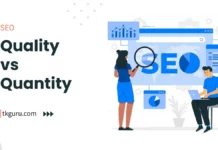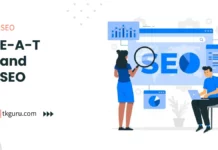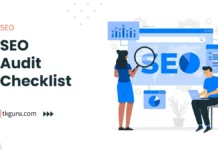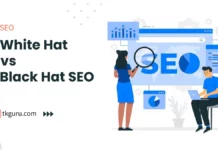Advertisements
Ratings
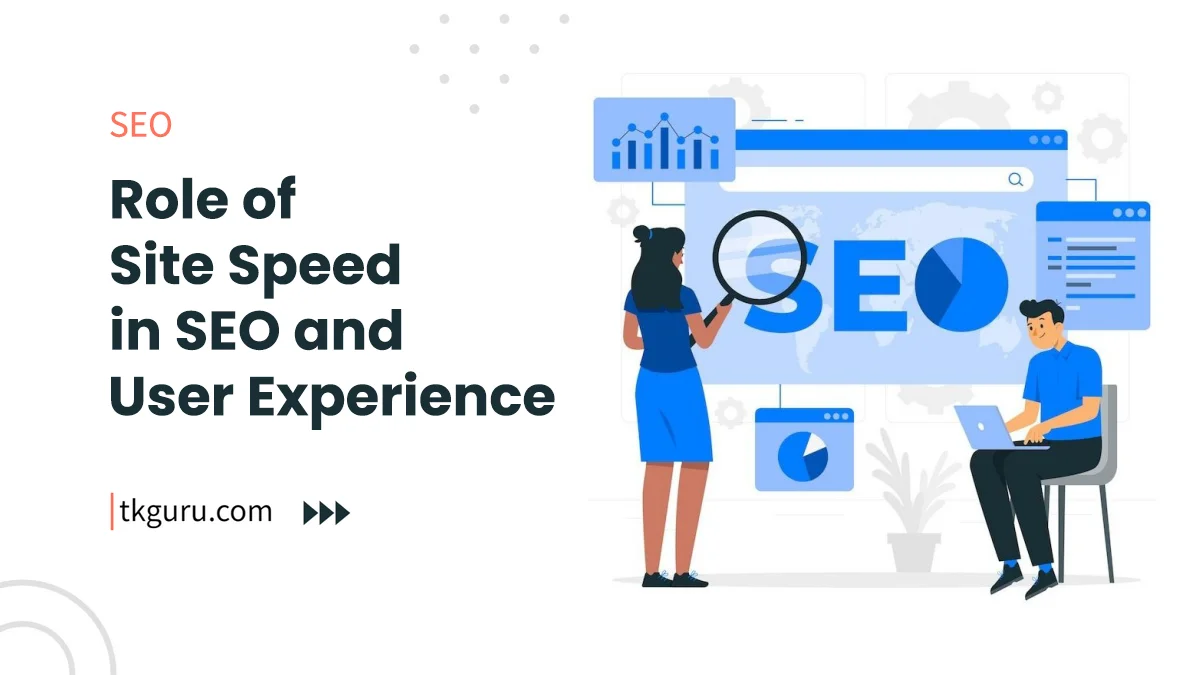
Role of Site Speed in SEO and User Experience – In today’s digital landscape, speed isn’t just a luxury; it’s a necessity.
The swiftness with which a website loads not only influences user experience but also plays a crucial role in determining search engine rankings.
The relationship between site speed, SEO, and user experience is profound, shaping the way visitors interact with websites and how search engines evaluate their worth.
In this comprehensive guide, we will explore the multifaceted significance of site speed, the SEO implications it holds, and how it underpins a seamless user experience.
Contents
- 1. Understanding Site Speed: A Prerequisite for Success
- 2. The SEO Implications of Site Speed
- 3. User Experience and Site Speed: The Unbreakable Connection
- 4. The Technical Factors Affecting Site Speed
- 5. Mobile Site Speed: A Priority for SEO and User Experience
- 6. Measuring and Analyzing Site Speed
- 7. Real-World Impact: Case Studies of Site Speed’s Influence
- Conclusion: Site Speed as the Catalyst for Transformation
- 8. Site Speed and User Retention: Navigating Bounce Rates
- 9. Enhancing User Engagement and Conversion Rates through Speed
- 10. SEO Benefits: Beyond Rankings to Enhanced Visibility
- 11. A Holistic Approach: Balancing Rich Content and Speed
- 12. Future-Proofing Your Site: Navigating Technological Advances
- Conclusion: Speed as a Cornerstone of Digital Success
- Role of Site Speed in SEO and User Experience FAQs
1. Understanding Site Speed: A Prerequisite for Success
Defining Site Speed and Its Impact
Site speed, simply put, refers to how fast a website’s pages load. This fundamental aspect of web performance directly affects user satisfaction and engagement. Slow loading times can frustrate visitors, leading to higher bounce rates and reduced conversions.
Site Speed as an SEO Factor
Search engines, particularly Google, have recognized the importance of site speed in delivering a positive user experience.
Google’s mission is to provide users with the best possible results, and a fast-loading website contributes to that mission by enhancing user satisfaction.
2. The SEO Implications of Site Speed
Google’s User-Centric Approach to Search Rankings
Google’s ranking algorithm evolves to reflect user behavior and preferences. As users increasingly demand quick access to information, Google prioritizes websites that cater to this need.
Core Web Vitals: The Metrics of User Experience
Google’s Core Web Vitals introduce concrete metrics that measure various aspects of user experience, including loading performance, interactivity, and visual stability.
| Core Web Vital | Metric | Explanation |
|---|---|---|
| Largest Contentful Paint (LCP) | Loading Performance | Measures the time it takes for the main content to load. |
| First Input Delay (FID) | Interactivity | Measures the delay between a user’s interaction and the response of the page. |
| Cumulative Layout Shift (CLS) | Visual Stability | Measures unexpected layout shifts that can annoy users. |
Incorporating Site Speed into Google’s Algorithm
Site speed isn’t merely a recommendation; it’s a ranking factor. Google considers how fast a page loads when determining its position in search results.
3. User Experience and Site Speed: The Unbreakable Connection
User Expectations for Speed
Modern internet users have high expectations for speedy experiences. They anticipate rapid loading times and seamless interactions across devices.
The Impact of Site Speed on User Behavior
Slow-loading websites can lead to higher bounce rates as users quickly lose patience and leave. On the other hand, fast-loading pages encourage visitors to stay and engage.
The Link Between Site Speed and Conversion Rates
A slow website can sabotage your conversion efforts. Speedier pages not only retain users but also increase the likelihood of them converting.
4. The Technical Factors Affecting Site Speed
Server Response Time
The time it takes for your server to respond to a user’s request is a crucial factor. Efficient server responses contribute to overall site speed.
Image Optimization
Images are often the largest files on a website, and improperly optimized images can slow down loading times significantly.
Browser Caching
By caching certain resources on a user’s device, you can reduce loading times for subsequent visits.
Minification of CSS and JavaScript
Excessively large code files can hinder loading times. Minification involves removing unnecessary characters and whitespace to make these files more compact.
5. Mobile Site Speed: A Priority for SEO and User Experience
Mobile-First Indexing
Google’s shift to mobile-first indexing means that mobile site speed is now a primary consideration for search rankings.
Mobile Site Speed and User Engagement
Mobile users are typically on the go and have even less patience for slow-loading pages. Optimizing mobile site speed directly impacts user engagement.
Strategies for Optimizing Mobile Site Speed
Responsive design, efficient image optimization, and utilizing mobile-specific plugins are all strategies for improving mobile site speed.
6. Measuring and Analyzing Site Speed
Tools for Evaluating Site Speed and Performance
Several tools, including Google’s PageSpeed Insights and GTmetrix, provide insights into your website’s speed and performance.
Interpreting Metrics for Actionable Insights
These tools offer metrics such as load times, page size, and performance scores, which can guide your optimization efforts.
Continuous Monitoring and Iterative Improvement Strategies
Site speed isn’t a one-time fix. Regular monitoring and adjustments are necessary to maintain optimal performance.
7. Real-World Impact: Case Studies of Site Speed’s Influence
Case Study 1: E-Commerce Revolution – Speed Boosts Sales
The real-world impact of site speed optimization on user experience and SEO is best exemplified through case studies that showcase how businesses have transformed their digital presence and outcomes. Let’s delve into two compelling case studies that highlight the profound influence of site speed on various aspects of online performance.
Case Study 1: E-Commerce Acceleration – Speed Boosts Conversions
Background: An established e-commerce platform specializing in fashion faced a recurring challenge—high bounce rates, abandoned shopping carts, and a stagnant conversion rate. The culprit was slow loading times that frustrated users and impeded their path to purchase.
Strategy: Recognizing the importance of site speed, the e-commerce team embarked on a comprehensive speed optimization initiative.
Implementation:
- Server Upgrade: The platform migrated to a more robust server, significantly reducing server response times.
- Image Optimization: Product images were resized and compressed without compromising visual quality.
- Caching Mechanism: Browser caching was implemented, allowing returning users to experience quicker load times.
- Code Minification: CSS and JavaScript files were minified to reduce their file sizes and enhance rendering speed.
- Mobile Optimization: A responsive design was adopted to ensure fast performance across devices.
Results: The impact of the optimization efforts was profound:
- Bounce Rate Reduction: Bounce rates plummeted by 30%, indicating improved user engagement and satisfaction.
- Conversion Uplift: Conversion rates surged by 20% as users were more likely to complete transactions due to the seamless experience.
- Enhanced SEO Performance: The improved user experience translated to lower bounce rates, which contributed to better search rankings.
Case Study 2: Local Business Revival – Speed Enhances Local SEO
Background: A neighborhood bakery, renowned for its delectable treats, struggled to attract online customers despite a dedicated local following. High bounce rates and lackluster search visibility hindered their digital growth.
Strategy: Understanding the interplay between site speed and local SEO, the bakery focused on enhancing its online presence.
Implementation:
- Speed Audit: A comprehensive site speed audit identified bottlenecks and areas for improvement.
- Image Optimization: Images of mouthwatering pastries were optimized, striking a balance between quality and load times.
- Google My Business Enhancement: The bakery revamped its Google My Business profile, providing accurate information and encouraging reviews.
- Local Structured Data Markup: Implementing structured data markup helped search engines better understand the bakery’s local relevance.
Results: The optimization efforts yielded remarkable results:
- Bounce Rate Reduction: Bounce rates decreased by 25%, indicating that users were more engaged and compelled to explore further.
- Local Search Visibility: The bakery’s local search rankings improved by 40%, making it more discoverable to nearby customers.
- Enhanced Online Orders: Within three months, online orders doubled as the seamless site speed experience facilitated conversions.
Conclusion: Site Speed as the Catalyst for Transformation
These case studies vividly demonstrate the tangible impact of site speed optimization on user experience and SEO performance.
By prioritizing site speed, businesses not only reduce bounce rates and enhance user engagement but also create an environment conducive to higher conversion rates and improved search rankings.
The seamless synergy between site speed, user experience, and SEO goes beyond theory—it’s a transformative strategy that empowers businesses to unlock their digital potential and foster enduring success in an increasingly competitive online landscape.
As these examples illuminate, site speed isn’t merely a technical aspect—it’s a driving force that reshapes user interactions, bolsters brand credibility, and accelerates online achievements.
The Correlation Between Slow Site Speed and High Bounce Rates
Bounce rates tend to increase as site speed decreases. Users are more likely to abandon a page that takes too long to load.
How Site Speed Optimization Can Reduce Bounce Rates
Faster loading times create a positive first impression, encouraging users to explore your website further.
9. Enhancing User Engagement and Conversion Rates through Speed
The Connection Between Site Speed and User Engagement
Fast-loading pages keep users engaged, as they can access information quickly and effortlessly.
The Impact of Faster Loading Times on Conversion Rates
Speedy websites lead to higher conversion rates, as users are more likely to complete actions such as signing up or making a purchase.
10. SEO Benefits: Beyond Rankings to Enhanced Visibility
Improved Search Rankings and Visibility in Search Results
Google rewards fast-loading websites with higher search rankings, making your content more visible to users.
The Indirect Influence of Site Speed on Backlinks and Social Sharing
When users have a positive experience on your website, they are more likely to share your content and link to it from their own websites.
11. A Holistic Approach: Balancing Rich Content and Speed
Strategies for Maintaining Quick Site Speed with Multimedia Content
Implement techniques such as lazy loading and asynchronous loading to ensure that media-heavy content doesn’t compromise site speed.
Leveraging Lazy Loading and Content Delivery Networks (CDNs)
Lazy loading delays the loading of non-essential content until the user scrolls down, while CDNs distribute content across multiple servers for faster delivery.
Embracing Emerging Technologies to Further Accelerate Loading Times
Stay updated on new technologies, such as HTTP/3 and QUIC, which offer faster and more secure connections.
Preparing for Evolving User Expectations and Preferences
As users become accustomed to faster experiences, their expectations will continue to rise. Anticipate these shifts and adapt accordingly.
Conclusion: Speed as a Cornerstone of Digital Success
In the digital age, speed is more than a convenience—it’s a critical factor that influences user satisfaction, engagement, and search rankings. The intricate relationship between site speed, SEO, and user experience demands attention and investment.
By prioritizing site speed optimization, businesses create a solid foundation for sustained online success, higher search visibility, and increased user engagement.
As the digital landscape continues to evolve, the need for speed remains constant—a driving force that shapes the online journey for both users and websites alike.
Role of Site Speed in SEO and User Experience FAQs
How does site speed affect SEO?
Site speed is a critical factor in SEO. Search engines like Google consider page speed as part of their ranking algorithms.
Faster-loading websites are more likely to rank higher in search results, leading to better visibility and increased organic traffic.
Why is site speed important for user experience?
Site speed directly impacts user experience. Slow-loading websites frustrate visitors and lead to higher bounce rates.
A fast website provides a smoother browsing experience, improves engagement, and encourages users to stay longer and explore more content.
How does site speed impact mobile users?
Mobile users often have limited bandwidth and slower connections compared to desktop users.
A slow mobile site can lead to even more significant user frustration and lower rankings in mobile search results.
What are the benefits of having a fast website?
A fast website offers several benefits:
- Improved user satisfaction and engagement.
- Reduced bounce rates and higher conversion rates.
- Higher search engine rankings.
- Better mobile user experience.
- Enhanced accessibility for users with slower connections.
How can I improve my website's speed for both SEO and user experience?
To enhance site speed:
- Optimize images by compressing and resizing them.
- Minimize HTTP requests by reducing the number of elements on a page.
- Use browser caching to store frequently used resources.
- Enable compression for your website's files.
- Choose a reliable and fast web hosting provider.
Site speed is crucial for both SEO and user experience. By prioritizing site speed optimization, you can provide a better browsing experience for your visitors, boost search engine rankings, and ultimately increase the chances of converting visitors into customers or subscribers.
| Web Hosting | Website |
| WordPress | Google Adsense |
| SEO | Affiliate Marketing |
| Blogging | YouTube |
Recent Posts
- Top 6 SEO Companies in Ahmedabad 2024: Unlock Success with the Top SEO Companies in Ahmedabad
- Top 5 SEO Companies in Kanpur 2024: Discover the Top-Rated SEO Companies in Kanpur
- Quality vs Quantity: The Importance of High-Quality Backlinks
- E-A-T and SEO: Expertise, Authoritativeness, Trustworthiness
Related Tags
google recommended page load time, what is a good load time for a website, page speed insights, how to speed up web page loading time, page load time user experience, page speed test, how important is page speed for seo, page load speed



